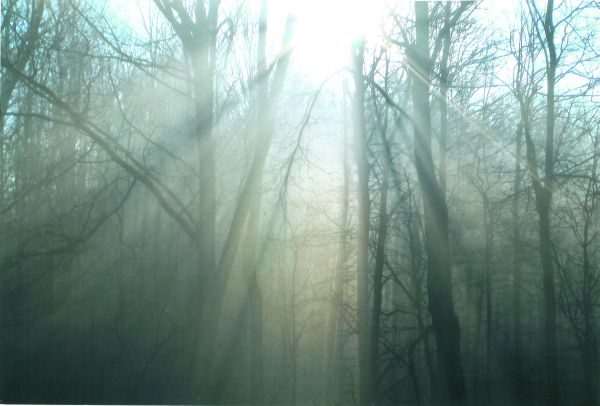Rustic Sunrise
 |
Near the rustic countryside of Waterloo, Ontario, the early morning sun rises over the autumn forest. Nearby, songbirds chirp and squirrels leave their dens in search of food for the winter. All is still. The beams of light which seem to be radiating from the rising sun are called crepuscular rays. Due to the fog, dense masses of water droplets are afloat in the air; the rays are refracting and scattering everywhere. The light travelling in all directions results in the appearance of very defined rays of light. In actuality, there is a small but relatively visible aura of crepuscular light around most bright sources of light in normal environmental conditions, but it is hard to discern because of the low density of refracting particles. Although they are not a very sophisticated phenomenon of physics, crepuscular rays of light are beautiful displays of science which anyone can appreciate whether they have studied physics or not.
Socrates Li
Sir John A. Macdonald Secondary School, Waterloo, ON
Third Prize ( High School Individual Category )
Questions or comments regarding these pages may be sent to
cap@uottawa.ca